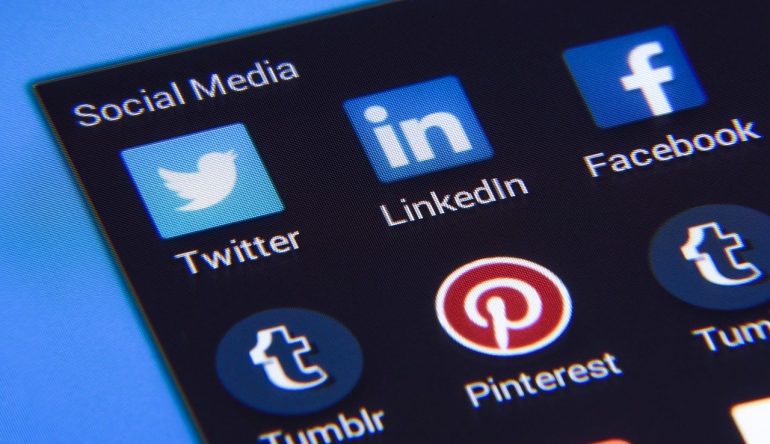Digital marketing evolution has been nothing short of impressive in its short 3 decades long lifespan.
Let’s brush up our knowledge a bit. Digital marketing presents the type of marketing that utilizes the internet to promote products and services, and for a while now, it has been in full swing.
Ads can be found on almost every website, especially social media platforms, which have become companies’ favorite way of promotion.
Influencers, social media ad services and email marketing are especially popular digital marketing strategies, but we didn’t get to where we are right now overnight.
Since it is such an interesting topic, today, we are bringing you the history and evolution of digital marketing. Let’s begin.
Digital marketing in the 90s
If the 90s didn’t bring the popularity of personal computers, digital marketing would have started years later. The 90s were when the term digital marketing was coined and when it kicked off into popularity.
People started buying personal computers and using email, and in only two years, between 1994 and 1996, the number of people using the internet went from 16 to 70 million. What caused this explosion of new users was Netscape, the first successful browser.
The first ever clickable banner ad appeared in 1994, and about 44% of people who saw it clicked on it. It was owned by AT&T and it was placed on the HotWired website.
During the same year, the first eCommerce internet transaction took place, and Yahoo! launched, as well. It grew rapidly, going public in April 1996 and being the most popular starting point for web users by 1998.

Amazon also launched in 1994, and eBay followed and launched a year later. Email marketing started being used widely, and it remained one of the most effective digital marketing strategies even in 2020.
The year 1998 was of huge significance for digital marketing: that was the year Google launched, after the domain name for it was registered on September 15th in 1997.
The launches of Google and Yahoo! caused marketers to use what today are considered illegal SEO techniques – keyword stuffing, bad backlinks, and excessive tagging.
Related: How to do off-page SEO in 2022?
Using them, they managed to boost their websites onto the first pages of search engines and gain a ton of clicks, sales and engagement.
Today, search engines are much smarter and are able to detect any foul play, which results in website bans.

Digital marketing in the 2000s
The number of internet users only continued to grow, and there were 361 million internet users in the year 2000. The 2000s were prolific and a large number of influential platforms appeared during that time period.
LinkedIn launched in 2002 and this professional social media platform is going strong to this day. A year later, WordPress and MySpace appeared.

News Corporation acquired MySpace in 2005 for $580 and it was the most visited social media platform in the world in 2008, with over 75.9 million users.
WordPress remains the most successful and best content management system, and, despite many other more successful social media platforms appearing, MySpace is still active and had 50.6 monthly active users in 2015 (fun fact, MySpace surpassed Google as the most visited website in the United States in 2006).
The year 2004 brought the launch of Gmail, as well as Facebook. Gmail offered 1 gigabyte of storage, which was significantly more than what the competitors offered at the time. This made it stand out from all other email platforms. Just a year later, the storage limit doubled to 2 gigabytes.

If you aren’t familiar with the history of Facebook, it initially started off as a student directory featuring photos and personal information.
It was at first only available to the students of Harvard, and then expanded to most of the universities of the United States and Canada.
In 2006, everyone above the age of 13 with a valid email address could create a Facebook account. At the end of 2007, there were 100.000 pages where companies could promote themselves, a significant part of the evolution of digital marketing.
As you can see, the 2000s brought the launches of today’s biggest and most important platforms for digital marketing: Google and their Google Ads and Facebook with their Facebook Ads.

But, the evolution of digital marketing didn’t end there.
Digital marketing in the 2010s
In 2010, there were 1.97 billion internet users in the world, a significant increase from 361 million in 2000. People started using smartphones and small devices more in general, which enabled them to browse the internet anywhere anytime. The social media platforms that launched in the 2000s and Google set a foundation for digital marketing in the 2010s.
Companies started paying more attention to their customers’ interests, wishes and needs, and creating more emotional and personalized ads that they then started posting using social media platforms’ ad services.

These ad services developed fast and were successful right off the bat. Facebook Ads is still thriving, and Instagram caused the rise of influencer marketing, the new popular digital marketing strategy.
2012 was a great year for social media. Facebook was the most used social media platform, with Blogger and Twitter behind it. Pinterest appeared the same year and was a huge hit immediately, causing brands to come up with new strategies of how to promote their content on this unique platform and learn more about their customers.

In 2014, the number of mobile and smartphone users was higher than the number of desktop users.
What about the present?
Today, more than 3.5 billion people use social media, which is about 45% of the population (stats from 2019).
Facebook is still the most used social media platform, with over 2.45 billion monthly active users. When it comes to digital marketing, 94% of Facebook Ad revenue comes from mobile. Facebook has released the information that over 3 million businesses actively advertise on their platform.
A large number of 54% of people use social media to learn more about products and brands. When it comes to online shopping and eCommerce, their users are growing by the day. Experts think that by 2040, about 95% of all purchases will be made online.

Wrapping up
Digital marketing is continuing to grow, and by the looks of it, its evolution hasn’t stopped.
The 90s brought the popularity of internet and the first ever uses of digital marketing, which includes the first clickable banner ad. Their significance also lies in the fact that Amazon, Yahoo! and Google all launched during this time period, as well.
The 2000s brought us a significant increase in internet users and the launches of MySpace, WordPress and Facebook, all platforms extremely significant for both digital marketing and eCommerce.
The 2010s were marked by mobile and smartphone users being more numerous than desktop users. Facebook became the most used social media platform, and Blogger and Twitter were almost as popular. Today, the number of social media users is more than 3.5 billion people all over the world, which makes digital marketing an even more appealing marketing option.
There are new marketing trends appearing every month and new marketing strategies, as well. Who knows, maybe in a few years we might see the launch of the new Facebook, that will change the social media and digital marketing game forever.
Do you need a digital marketing specialist?





